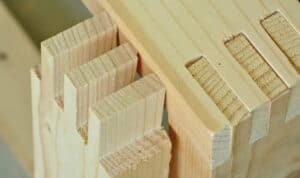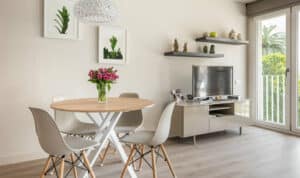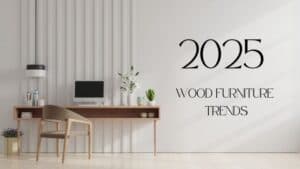Sectional sofas allow for flexible seating arrangements and can accommodate larger groups of people compared to traditional sofas. However, with the wide variety of styles, materials, and features available choosing the right sectional for your needs can be tough. This guide provides top tips to help you make an informed decision.
From considering size and layout options to material choices and budget, these recommendations will steer you toward the perfect for your space.

Key Takeaways:
·What is a Sectional Sofa
A sectional sofa is a large upholstered sofa composed of separate modules or “sections” that can be arranged in different configurations.
·Tips for Buying a Perfect Sectional Sofa
- Size: Sectional sofas come in a range of sizes, but they’re standardized. Generally, the overall length is between 94″ and 156″ (about 8′ – 13′ long); the overall width is between 94″ and 168″ wide.
- Style: Common types of sectional sofas are L-shaped sectionals, U-shaped sectionals, curved sectionals, modular sectionals, and reclining sectionals.
- Comfort: Evaluate seat depth, back height, cushion fill material, and firmness. Make sure seats properly support your back and you can lounge comfortably.
- Material: Major options include fabric, leather/faux leather, and microfiber. Consider durability, stain resistance, maintenance needs, and cost. Performance fabrics are good for families.
- Price: Sectional prices range widely. Set a realistic budget and look for sales, but don’t sacrifice too much on quality and comfort for a lower price. Expect to invest more for better construction and materials.
- Configuration: Consider RAF or LAF. Modular sectionals allow customization of left/right-facing chaise, curvature, and number of seats. This flexibility lets you tailor the sectional to your room over time.
·Advantages and Disadvantages of Sectional Sofa:
Opting for a sectional sofa provides ample seating, making it perfect for entertaining or family gatherings. It allows for creativity in layout and can evolve with your space and needs.
· Differences Between Sectional Sofa and Sectional Couch:
- Sectional sofas can be rearranged and customized more with additional chaises, corners, and other modular pieces.
- Sectional couches are one fixed piece with less flexibility to change the configuration.
·The Average Price of a Sectional Sofa
The average price range for a sectional sofa seems to be $1,000 to $2,000. More budget-friendly options start around $500, while high-end designer sectionals can cost over $5,000.
Hoolnn is a professional furniture manufacturing company. If you want sectional sofas at an affordable price and customized service, please contact us.
Understanding Sectional Sofas
When you’re in the market for a sectional sofa, consider its shape, materials, and size to ensure it fits your space and lifestyle. Let’s dive into the details so you can find the perfect sectional for your home.
The Basics of Sectionals
A sectional sofa is a multi-piece furniture item typically composed of two or more joined sections to form various shapes. Unlike traditional sofas, sectionals offer more flexibility and can be adapted to fit the contours and size of your living area.
Different Sectional Shapes
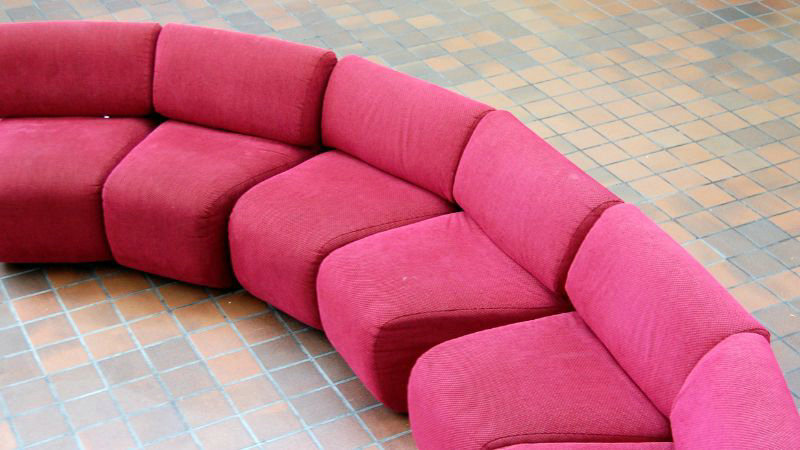
Sectionals are available in numerous configurations:
- L-shape is ideal for open areas and fits neatly in corners.
- U-shaped and C-shaped sectionals provide ample seating and work well in larger rooms which is a perfect choice for large families or gathering with friends.
- Modular sectionals offer the ultimate flexibility, allowing you to rearrange the individual sections to suit your needs or preferences.
- Reclining Sectionals have reclining seats with adjustable backrests and footrests which provide additional comfort and relaxation positions.
- Curved Sectionals always give an elegant look to the room. Because of their shape, they create a space that is easy for family members or friends to have a conversation.
- Rounded Chaise Sectionals feature a chaise with a curved, rounded end rather than a sharp 90 degree angle. It softens the overall look and angles of the sections.
- Angled Chaise Sectional Sofas have a chaise lounge that sticks out at an angle rather than perpendicular.
- Bumper Chaise Sectionals have a “bumper” on one end instead of a closed armrest, leaving one end open, which allows seating to face multiple directions. They can fit well in smaller spaces.
- Reversible Sectional Sofas have a chaise section that can be flipped to change the orientation from left-facing to right-facing or vice versa. Often have storage ottomans included.
Sectional Materials and Upholstery
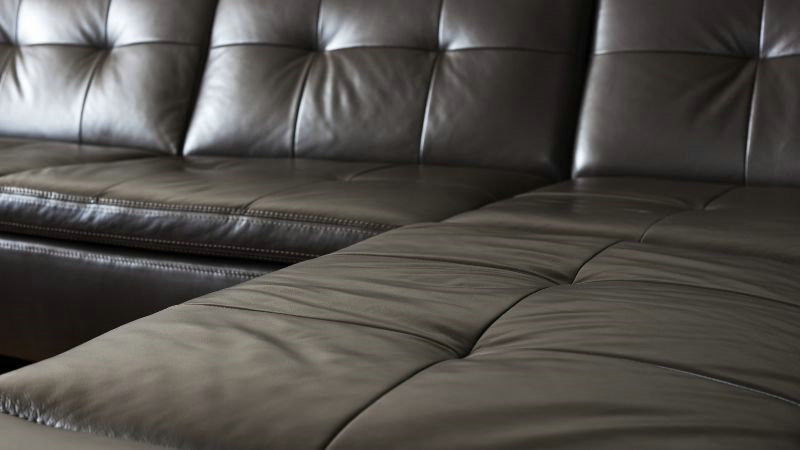
Your sectional’s durability and aesthetic appeal depend on its materials.
- Leather: Provides a sophisticated look and is excellent for stain resistance and longevity.
- Cotton: The most popular and affordable natural fiber. Soft, breathable, and durable. Easy to clean but prone to wrinkles and staining. Many style options.
- Linen: Made from flax plant fibers. Very durable and moisture-wicking. Resists bacteria but is prone to wrinkles. Often used for more formal, upscale looks.
- Wool: Naturally elastic, insulating, and soil/stain resistant. Very durable but can be warm, absorb odors, and show wear. Comes in various textures and patterns.
- Velvet: Soft and elegant with a distinctive pile texture. Can be made from various fibers. Durability and cost vary. Requires special care but resists wear if high quality.
- Chenille: Extremely durable and easy to clean but expensive. Improves with age. Can be hot but provides excellent support. Various grades are based on hide quality.
- Microfiber: Synthetic budget options. It is very durable and stain-resistant but not as breathable. Easy to clean but can pill. Improvements in look and feel.
Sizing and Measuring for Your Space
To ensure your sectional fits perfectly, consider the following:
- Measure: Calculate your room and other furniture’s dimensions like window, doorway, or fireplace, and the size of the sectional to prevent an overbearing or undersized appearance.
- Dimensions: Keep in mind that sectionals can vary significantly in size, but generally, the overall length is between 94″ and 156″ (about 8′ – 13′ long); the overall width is between 94″ and 168″ wide.
Buying Guide: Choose the Right Style and Comfort

Design and Aesthetics
The design of your sectional should reflect your personal style and complement your existing decor. From sleek, modern lines to timeless mid-century silhouettes, each design has unique aesthetics that can either stand out as a focal point or blend harmoniously with your room.
Color and Fabric Options
Your sectional’s color and fabric are central to the look and feel of your space. Options range from soft velvet for a touch of elegance, to durable, stain-resistant fabrics ideal for homes with pets or kids. A neutral color can be versatile, while a bold hue can add a striking visual element.
Comfort Features and Depth
For the ultimate comfort, consider sectionals with plush cushions and ample depth to snuggle into. Some sectionals offer reclining features for an additional level of relaxation. Always look for quality construction that provides good support and resilience over time.
The Differences Between RAF and LAF
When shopping for a sectional, you’ll come across the terms “RAF” and “LAF” to describe the orientation of the sofa’s arms. Here’s a quick guide to understand them.
Right Arm Facing (RAF):
- When facing the piece, the arm is on your right.
Left Arm Facing (LAF):
- When you’re facing the piece, the arm is on your left.
Remember:
- The RAF or LAF piece will act as the “end” of your sectional, marking its boundary on one side.
- If your sectional has a chaise, RAF means the chaise extends from the right side and LAF from the left.
- Picking the correct arm facing allows you to tailor the sectional to your room’s layout. For example, if your living space favors a longer section on the right as you look at the sofa, you’ll need an RAF sectional.
Prepare a floor plan, consider the layout of your space, and think about entrances, the flow of traffic, and orientation towards focal points like TV or fireplace. Your sectional should complement the room, not obstruct it. Understanding RAF and LAF helps ensure you’re making a choice that not only fits your style but also your space.
Functional Aspects of Sectionals
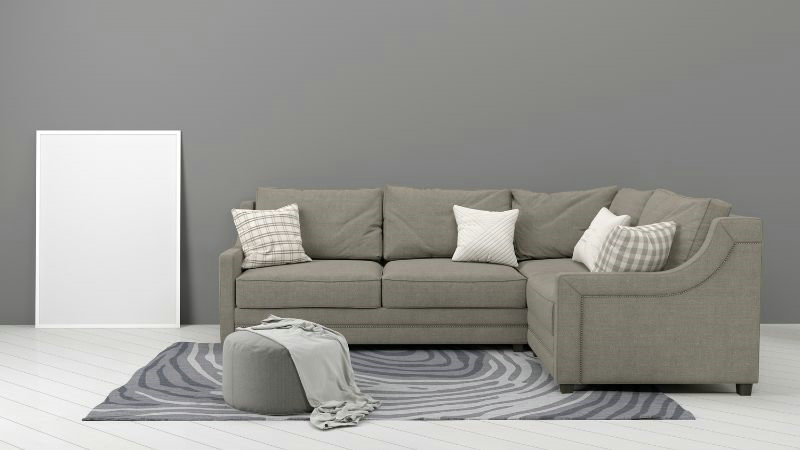
When selecting a sectional sofa, considering its functionality in your space is crucial. Features such as layout and potential add-ons can greatly enhance your living experience, thus, making your sectional not just a piece of furniture but a multi-functional centerpiece for your home.
Special Features and Add-ons
Your sectional can come with various special features that provide additional comfort and convenience. Consider opting for a sleeper sofa for hosting overnight guests, or choose models with built-in storage to keep living room essentials hidden yet accessible. An ottoman can serve as extra seating, a footrest, or an impromptu table space, while a loveseat section adds coziness for couples.
- Sleeper Sofa: Transforms your sectional into a bed, optimal for guest rooms.
- Ottoman: Enhances the functionality with added storage or seating.
- Reversible: Offers flexibility with an interchangeable chaise.
Choosing Sectionals for Specific Needs

When selecting a sectional for your home, consider designs that cater to pets and children, optimize smaller spaces, and offer versatile functionalities for today’s dynamic living situations.
Pet-Friendly and Kid-Friendly Designs
For homes bustling with kids and pets, look for sectionals with durable, easy-to-clean fabrics like microfiber or a stain-resistant blend of nylon and polyester. Leather is a practical choice for easy cleanup, withstanding the wear and tear from your furry friends. Features such as removable cushion covers can be a lifesaver for maintaining a clean and fresh sofa.
Sectionals for Small Spaces
Your cozy corner of the world deserves a sectional that fits just right. Opt for corner sectionals or a chaise lounge design that maximizes seating without overwhelming the room. Modular designs allow you to mix and match pieces to tailor the shape and size of your sectional, ensuring a perfect fit for your small space.
Multifunctional and Convertible Sectionals
Maximize the utility of your space with multifunctional sectionals. A convertible sectional with a pull-out bed or built-in storage under the seats offers functionality and comfort. Reclining sectionals provide an additional level of relaxation for movie nights or lounging. Choose modular pieces to change your sectional’s configuration when needed, offering practical versatility for your living arrangements.
- Features to look for: Storage options, sleeper mechanisms, adjustable headrests, and reversible sectional layouts.
Accessorizing Your Sectional
Accessorizing your sectional can refresh the look of your living room and enhance comfort. By choosing the right items, you can create a cohesive and inviting space that encourages conversation and relaxation.
Throw Pillows and Decor
- Throw Pillows:
- Materials: For a modern look, consider pillows in materials like microfiber, cotton, or linen. These fabrics offer both comfort and durability.
- Patterns and Colors: Mix and match patterns to add visual interest. For a leather sectional sofa, try using a combination of solid and textured pillows to contrast with the leather’s smoothness.
- Decor:
- Tabletop Items: Place a woven basket or a small tray on your coffee table for functionality and style.
- Blankets: Drape a chenille or twill blanket over the side of your sectional. It adds texture and is perfect for cozying up during conversations.
Complementary Furniture Pieces
- Tables:
- Coffee Table: Choose a coffee table that complements the size and shape of your sectional. It should be easy to reach from all seats.
- End Tables: Position end tables within arm’s reach of seating areas for convenience.
- Additional Seating:
- Accent Chairs: Include one or two accent chairs to complement your sectional. This increases seating and encourages a conversational atmosphere.
- Ottomans: An ottoman can serve as a footrest, extra seating, or even as a makeshift table with a tray on top.
Accessorizing your sectional is about balancing style and function. Focus on pieces that enhance the comfort of your living room while reflecting your personal style.
In conclusion, taking the time to measure your space, decide on necessary features, compare materials, and test comfort will lead you to find the ideal sectional sofa for your home. Don’t be afraid to shop around at retailers to get the best possible price. Choose one that fits your lifestyle and living space while staying within your budget. Armed with the tips provided here, you’ll be well-equipped to make an educated purchase and end up versatile and comfortable sectional sofa you love.

